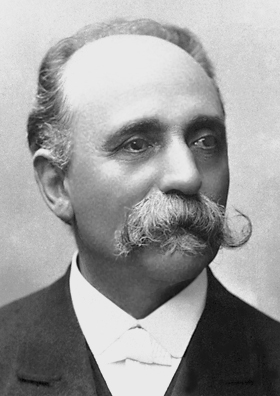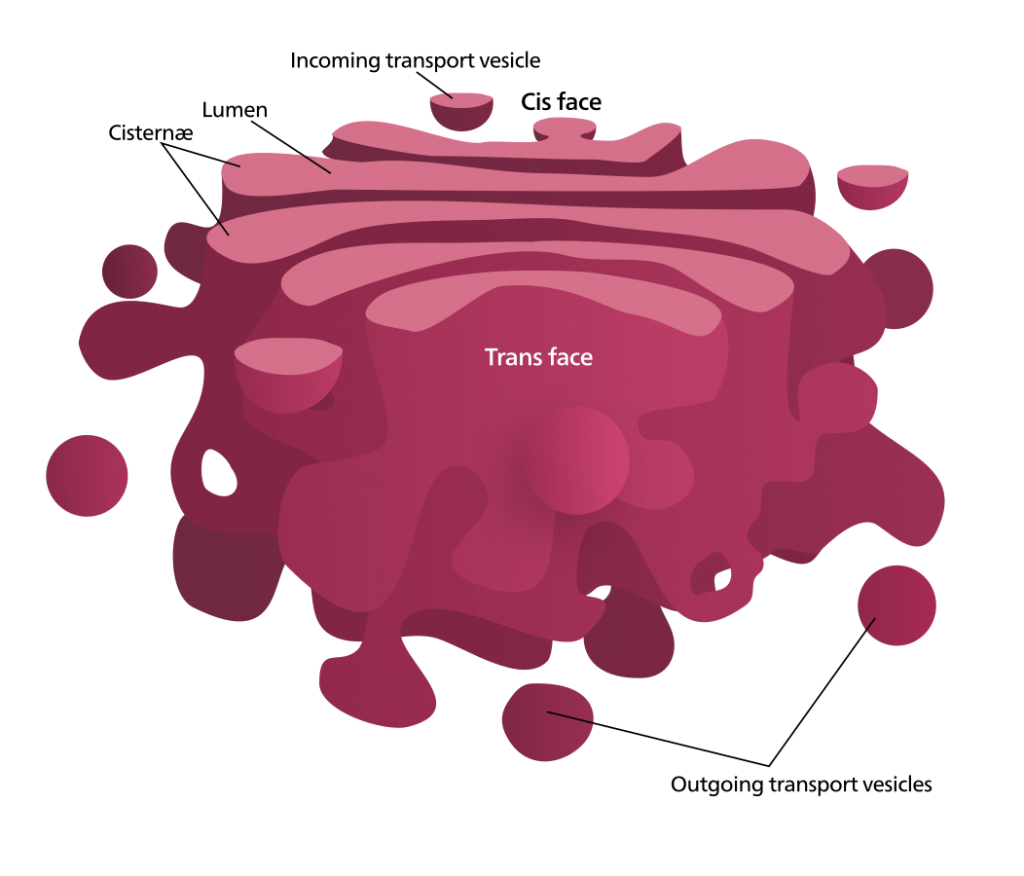Golgi-apparatus or Golgi complex or Golgi body is a system of stacks of flattened, membrane-bound sacs, vesicles, and tubules that participate in the transformation, secretion, and production of complex biochemicals.
It is part of the endomembrane system which also comprises the endoplasmic reticulum, vacuoles, and lysosomes.
Index
History
In 1898, Italian physicist Camillo Golgi first observed the Golgi-Apparatus while studying the nervous system. He initially named it “internal reticular apparatus.” Later it was named after him.
Dalton and Felix studied the Golgi Complex under an electron microscope in 1954 and became the first to come up with the electron microscopic structure of the organelle.

Occurrence and Location
All eukaryotic organisms contain Golgi-apparatus, with the exception of sieve tubes of plants, mammalian erythrocytes, and sperms of bryophytes and pteridophytes.
In plant cells, it forms a system of unconnected units called dictyosomes.
Structure

The Golgi Complex has four parts:
- Cisternae: Stacks of membranes bound sacs (or saccules). They give polarity to the apparatus. The convex side is forming face (cis-face), and the concave side is the maturing face (trans-face). The forming face receives materials from the nucleus. These materials are processed and transformed, and the maturing face releases them.
- Tubules: They form a complex network towards the periphery and maturing face.
- Vesicles: Also called secretion vesicles as they contain secretory substances. Vesicles attach to the tips of the tubules at various levels of the network.
- Golgian Vacuoles: They are pinched off from the maturing face. Some golgian vacuoles function as lysosomes.
Functions of Golgi Complex
- Packaging: Golgi complex is responsible for concentrating and packaging proteins. The proteins received from ER are packaged by the Golgi complex. These are then transported to various cell parts and secreted out via the process of exocytosis into extracellular space.
- Membrane Transformation: Golgi complex converts one type of membrane into another. It also aids in the recycling of the plasma membrane.
- Glycoproteins and Glycolipids: As we know that the Rough Endoplasmic Reticulum (RER) synthesize Proteins and Smooth Endoplasmic Reticulum (SER) synthesize lipids. Golgi Complex produces Glycoproteins and Glycolipids from proteins and lipids respectively.
Related Articles
Questions
- Briefly describe the Golgi Apparatus.
Golgi apparatus or Golgi complex is a system of stacks of flattened, membrane-bound sacs, vesicles, and tubules that take part in the transformation, secretion, and production of complex biochemicals.
- What is the principal function of the Golgi Apparatus?
The Golgi complex concentrates and packages the products of glandular cells in a protein coat. It helps in recycling the plasma membrane. It also produces Glycoproteins and Glycolipids:
FAQs
Golgi apparatus or Golgi complex is a system of stacks of flattened, membrane-bound sacs, vesicles, and tubules.
If Golgi Apparatus is removed from the cell, the production of Glycolipids and Glycoproteins is effectively stopped.
Golgi apparatus is only found in eukaryotic organisms with the exception of sieve tubes of plants, mammalian erythrocytes, and sperms of bryophytes and pteridophytes.
In 1898, Italian physicist Camillo Golgi first observed the Golgi Apparatus while studying the nervous system.
The convex side is called forming face (cis-face), and the concave side is called the maturing face (trans-face).
